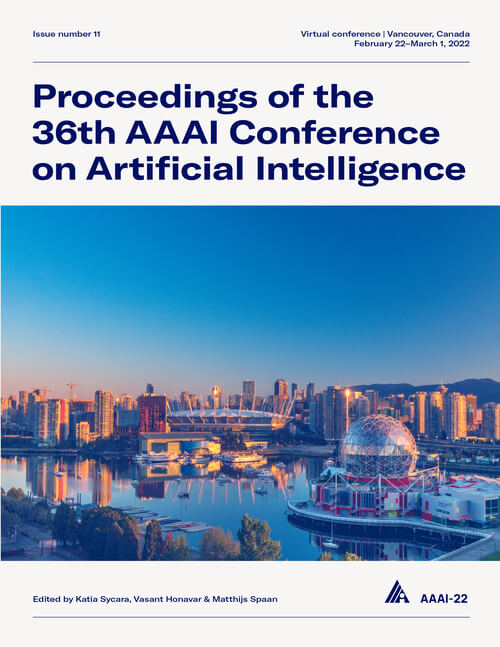Deep Incomplete Multi-View Clustering via Mining Cluster Complementarity
DOI:
https://doi.org/10.1609/aaai.v36i8.20856Keywords:
Machine Learning (ML), Data Mining & Knowledge Management (DMKM)Abstract
Incomplete multi-view clustering (IMVC) is an important unsupervised approach to group the multi-view data containing missing data in some views. Previous IMVC methods suffer from the following issues: (1) the inaccurate imputation or padding for missing data negatively affects the clustering performance, (2) the quality of features after fusion might be interfered by the low-quality views, especially the inaccurate imputed views. To avoid these issues, this work presents an imputation-free and fusion-free deep IMVC framework. First, the proposed method builds a deep embedding feature learning and clustering model for each view individually. Our method then nonlinearly maps the embedding features of complete data into a high-dimensional space to discover linear separability. Concretely, this paper provides an implementation of the high-dimensional mapping as well as shows the mechanism to mine the multi-view cluster complementarity. This complementary information is then transformed to the supervised information with high confidence, aiming to achieve the multi-view clustering consistency for the complete data and incomplete data. Furthermore, we design an EM-like optimization strategy to alternately promote feature learning and clustering. Extensive experiments on real-world multi-view datasets demonstrate that our method achieves superior clustering performance over state-of-the-art methods.Downloads
Published
2022-06-28
How to Cite
Xu, J., Li, C., Ren, Y., Peng, L., Mo, Y., Shi, X., & Zhu, X. (2022). Deep Incomplete Multi-View Clustering via Mining Cluster Complementarity. Proceedings of the AAAI Conference on Artificial Intelligence, 36(8), 8761-8769. https://doi.org/10.1609/aaai.v36i8.20856
Issue
Section
AAAI Technical Track on Machine Learning III

